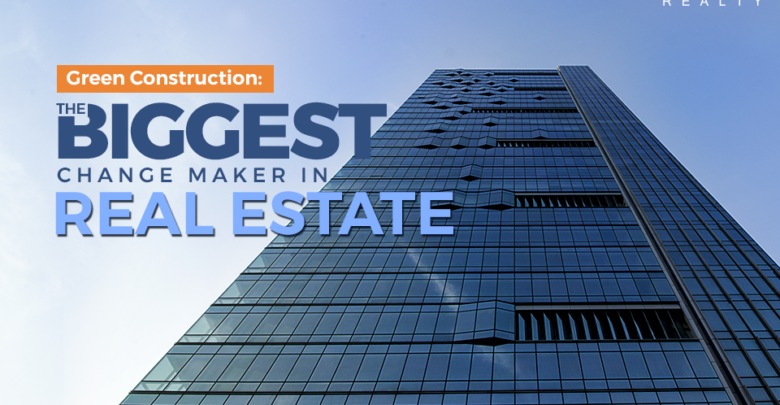Green Construction: The Biggest Change Maker in Real Estate
Rajendra Chandorkar, EVP, Architecture & Design, Oberoi Realty

With a billion-plus population, India is the world’s 4th largest country in terms of carbon emissions. Rapid urbanisation has led to a harsh impact on the environment. To remain energy-positive and reduce our carbon footprint, we need to focus on propagating energy efficient methods, use of renewable energy resources, preserving the bounties of nature et al. In real estate sector, since developing a project consumes a lot of natural resources, Green Construction can be the biggest change-maker.
The Green Movement
Considering the damages already done to our planet, it is imperative that what we choose to build not only lasts a long time but also helps protect the environment. This is the ethos behind the Green Movement which was spearheaded by the British way back in the ‘90s. The movement started with a rating system called BREEAM (Building Research Establishment Environmental Assessment Method) which was later adapted by US authorities as LEED (Leadership in Energy and Environmental Design). In India, the 1st LEED project was certified in 2004 and since then several green building projects have pursued and achieved certification under the LEED rating program. Apart from USGBC’s LEED rating system, in India there is also the Indian Green Building Council (IGBC) rating system and the GRIHA rating system which are followed by many projects across the country. While there are many green rating systems, at a fundamental level, they all want buildings to do the same thing – reduce energy use, minimize water use, reduce waste, preserve natural resources and create a healthier and better space for all its occupants. Also all these rating systems talk about the drastic need to reduce our impact on this planet by constructing Green buildings.
What are Green Buildings?
Green buildings are created using environment-friendly and energy-efficient methods throughout the building’s lifecycle – from design, construction, operation, maintenance, renovation to deconstruction. The buildings must follow all or most of the following:
- Preserve the natural environment of the location as much as possible.
- Make maximum use of daylight to minimize the use of electricity.
- Implement various passive strategies including orienting the longer facades to face north and south, providing adequate shading to the building façade and envelope, optimizing building form and siting to reduce heat ingress etc.
- Design high performance building envelope to reduce heat ingress
- Use energy efficient lights and high performance HVAC equipment and systems to reduce energy use
- Ensure good indoor air quality so the use of AC is optimised, without hampering thermal comfort or occupant well-being.
Use renewable sources of energy such as solar, wind, biomass to reduce use and dependency of fossil fuels
Additionally, the construction materials must be sourced ethically and be recycled as far as possible. They should also be environment-friendly and not have adverse health impact.
Green buildings can reduce energy consumption by 20-30%, water usage by 30-50% and reduce waste generation significantly by extensive recycling. However, a latest report by Anarock says that as of September 2017 only about 5% of the buildings constructed in India were registered for green technology. This is highly concerning, considering a recent WHO survey has pointed out that 13 of the 20 most polluted cities in G-20 are in India.
The Way Forward
A green building transcribes into a healthier environment and better ecological balance. Though the initial cost of developing these buildings is higher by 10-15%, in the long run low operational costs make them a viable option. And of course, the fact is we are a nation with limited resources and an ever-increasing population! We can’t solely rely on the Government to provide non-renewable resources forever. The faster we adopt Green, the higher our chances of living a better life. And considering the impact of the real estate sector on the environment, green buildings are the best way to go green.
This is perhaps why there is an increasing governmental push for creating Green buildings, with incentives and subsidies for sustainable buildings. Moreover, the general public is also becoming more concerned about the future of the planet and is looking for Greener alternatives in all aspects of their lives. In fact, a lot of buyers are highly concerned and specifically check for the ‘green’ certificate before making an investment. With this in mind, developers are exploring new ways to build and sell green developments and still stay profitable.
The heart-warming news is in the same Anarock report – it states that the green buildings market in India will double by 2022; projections are around 10 Billion Sq. Ft. which will translate to a valuation of approximately USD 35-50 Billion.
ORL through its strong legacy has created best in class developments that enhance the quality of lifestyle.


